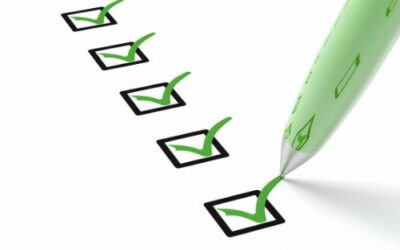Asset tracking gives you a way to monitor your business-critical tools and equipment. With asset tracking, you’ll be able to track the locations of your assets, who is using them, and how effectively they’re working.
Fixed asset register software can make your processes even simpler, as it will give you the ability to monitor exportable data which will help inform business decisions.
Knowing which assets you own, where they are, how much money they’re making, and any operational cost is essential, which is how fixed asset register software can help.
You can find out more about fixed asset registers in our blog: How to Create a Fixed Asset Register.
Why your Business Needs Fixed Asset Register Software
There are a lot of problems your business may be facing related to its assets. To name a few, you may be:
- Losing assets
- Logging zombie assets
- Logging ghost assets
- Unsure of who is using what
- Buying duplicate asset
Asset register software can help mitigate these problems. The idea behind asset register software is to create a system which is better than using a spreadsheet.
Spreadsheets become quickly out of date, as there is no real-time updating. What this means is that when an asset changes status, it requires time to update this status on your spreadsheet.
With fixed asset register software, however, any changes update immediately. These changes are then reflected in your fixed asset register instantly, ready for exporting or monitoring.
Therefore, logging what you own is more effective and helps prevent any of the asset-related problems which you may be facing.

Using Asset Tracking Features
A suite of asset tracking features will be in your fixed asset register software, meaning you’ll be able to monitor and control your assets much more effectively.
You’ll be able to use QR code asset tags to track asset location and asset movement. The way QR codes work also assists with the retrieval of an asset’s profile.
Effectively, you’ll create an asset register, then tag your assets. As our QR codes are unique, you’ll be able to then scan the QR code in your asset register software, and it’ll log the asset’s last seen location, the user who scanned the tag and open up the profile of that asset.
When this profile is opened, you’ll be able to add information directly against the asset. For example, if maintenance is required, you’ll be able to log it after scanning the QR. This, in turn, notifies your maintenance team which unique asset requires maintenance, speeding up your operations this way.
How to Use Fixed Asset Register Software to Improve your Asset Tracking
Due to the many features related to fixed asset register software, you’ll be able to improve your asset tracking no matter the industry.
For example, if you’re in the construction industry, your asset tracking may be very maintenance-heavy, as a reduction of asset downtime is essential. Using fixed asset register software allows you to request, log, and monitor maintenance.
If you’re in tools and equipment tracking and you rent out equipment, you’ll be able to use bespoke equipment checkout functionality to log who you’ve checked assets out to. You can then use Zapier integrations to add any important dates to your Google calendar, for example.
Overall, the functionality asset register software gives you automatically improves your asset tracking, as the control and visibility you have over your assets increases.
To find out more about how itemit’s fixed asset register software can help you, you can contact us here or fill in the form below.
Or, you can check out these blogs:
The Benefits of Hands-Free Equipment Maintenance Tracking
The Best Asset Tracking Solutions for your Small Business
How you Can Save Time and Money With an IT Asset Register
Use Fixed Asset Register Software Now!

Try itemit
Choose a better way to track
your assets.
Start your free 14-day trial now!

Keep Learning
itemit Blog
Tips, guides, industry best practices, and news.
Why Having An Accurate Asset Register Is Important
Why is having an accurate asset register so important and how can it help with equipment tracking? Read this post now to find out!
What To Include In Your Fixed Asset Register
What should you include in your fixed asset register and how can you make it work for you? Read this post now to find out!
What Exactly Is An Asset register?
What exactly is an asset register and will your chosen asset register format offer you everything you need? Read this post to find out!



